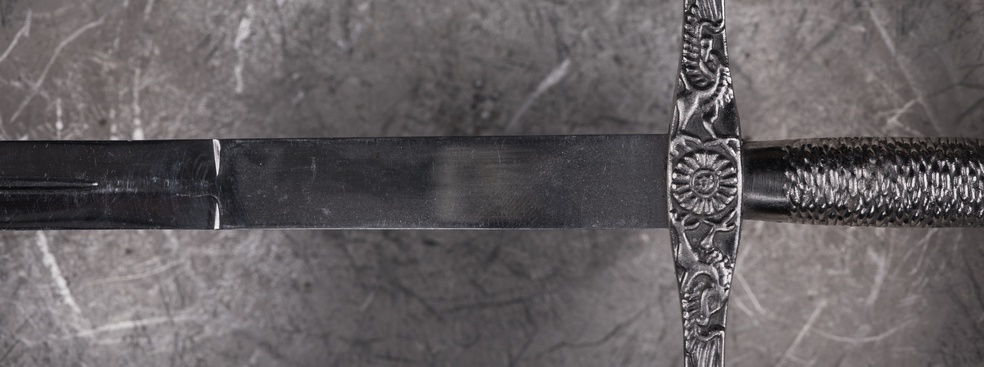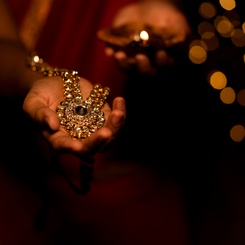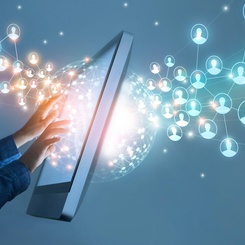A strong brand identity can take years to develop. This identity should direct how a brand communicates with its market. However, when certain phenomena like Game of Thrones come around and the franchise appears to be omnipresent, brands are faced with an important decision: should they piggyback onto the franchise brand and benefit from some short-term popularity or should it maintain its established communication strategy?
The eighth season of the ‘Game of Thrones’ ended on May 19 and over the course of the final season, more than 100 brands were linked to this epic TV series. In this interview, Steven Seggie, Associate Professor of Marketing, talks about the Game of Thrones, some of the more unlikely marketing decisions made by certain brands, and especially what will happen now that the show is over.
Danielle Steele: On April 14, 2019, the widely anticipated 8th season of the HBO series ‘Game of Thrones’ began. For two years fans had to wait to find out what was going to happen next in one of the most popular TV series of all times. However, the fans were not the only ones waiting; a number of brands were also waiting to ride the Game of Thrones wave to market their products. Today, Professor Steven Seggie will talk about how brand image should tie into a larger communication strategy. Professor Seggie, what does ‘Game of Thrones’ have to do with marketing and brand image?
Steven Seggie: Well, I think it’s quite interesting. When you look at Game of Thrones and the kind of phenomena it has become, it’s a lot bigger than expected. When they started the first series, I don’t think they were expecting viewing figures in the hundreds of millions that they‘ve got today. So, brands have been tying themselves to this franchise. I think we have seen about a hundred brands, either officially or unofficially, tying themselves to Game of Thrones for this particular series.
D.S.: Are these brands doing it well? Are they linking their brand image to the Game of Thrones well?
S.S.: Well, I think what’s important is to come back a little bit and think about when firms are engaging in a communication strategy, they are essentially telling a story of what they are as a brand, what they represent, and what they want to provide to the market. Therefore, when firms are engaging in a communication strategy, which involves every single touch point that the firm will actually have with the customer – that is to say other customers using the brand, stores in which the brand is sold, advertisements – these should all be in line with the general story that you are trying to tell about the brand. The problem is, when you have these large kind of phenomena like Game of Thrones, Star Wars, or any of these big franchises, brands tend to piggyback onto the brand that exists with the show and they don’t actually consider what their own overall communication strategy is and the story they have been telling to the market. Instead, they go for a short-term hit with these franchises.
D.S.: Are there any examples of brands that did this?
S.S.: There are three or four examples that I can think of out of the hundred brands that did this. One of them is Major League Baseball. Basically, Major League Baseball has been communicating a story about family, the fans, and the players as well as this notion of surprise: the idea that anybody can win at baseball. All of a sudden, they start marketing bobble head dolls – which usually take the form of the teams’ mascots – on the Iron Throne. Next, we begin to see mascots dressed as white walkers or as other characters from the show. How does that fit with the overall message of surprise that they have tried to communicate?
Oreo, another great example, for years has been communicating an image of playfulness. The notion of getting kids involved, breaking the cookies in half to dip it in milk, and generally getting people to play with their cookies. If you go to YouTube and look at Oreo advertising campaigns, they are all about this notion of playfulness; they are very much geared towards younger people as well as the youth within all of us. Then they introduced the special limited edition Game of Thrones dark Oreos. There are many things I like about the show, but one thing I certainly wouldn’t do is let my ten-year old daughter watch it. It’s not the kind of image or the kind of story that I would want her to see.
Another example is Red Cross that organized a blood drive during which if you donated blood, they would give participants a Game of Thrones poster and they could enter a drawing to win an Iron Throne. Yes, Game of Thrones is bloody, but I don’t think they thought through the whole strategy and what this really means. In many ways, I think a vampire movie would have been more suitable for the Red Cross, than this kind of bloody, gory, messy show.
There are many, many other examples: Johnnie Walker with the White Walkers or Mountain Dew, with special cans of Mountain Dew with Arya’s hit list on it. Essentially, these brands are taking a short-term view and there will definitely be a positive impact, but there is also the opportunity cost to consider. Could that money have been better spent somewhere else, in separate communication that would have a higher impact?
D.S.: Based on what you are saying, given the nature of the show, with its graphic images, the sex, the violence, can this be done well and if so, how?
S.S.: Two examples come to my mind, maybe three examples. The first one is that of OkCupid; essentially, they allowed their members to display a Game of Thrones logo on their profile so that they could attract people who were also fans of the show.
This makes sense in regards to that fact that we are talking about people’s shared interests. On a basic level, the idea is quite good. What are you interests? I like football, I like baseball, and I like Game of Thrones. Of course, when you consider the kind of Cersei and Jaime Lannister type of love affair, linking your brand with the notion of how love is represented in the show itself might be problematic.
Another very successful example is that of Risk, the board game. I used to play as a kid and I know where Kamchatka in Russia is because of that. It is a war game; it is about killing, and it is about taking over the world. Therefore, linking the game to Westeros and gaining control of the seven kingdoms seems perfectly logical and fits with the whole idea of Game of Thrones.
There is also a Game of Thrones version of Monopoly, which also fits in terms of branding. I think the key is that if you have products that are targeted specifically to adults, then you can have successful long-term co-branding, rather than in just a short-term hit.
D.S.: We have a question from one of the viewers, and it says ‘If a large number of brands use Game of Thrones, isn’t their message likely to be lost in the crowd?’
S.S.: Yes, I think that is one of the big issues as well, it can dilute your message. From the Game of Thrones brand perspective, this makes sense. They use a lot of the revenue generated https://www.youtube.com/watch?v=uSubKkMLhZg from co-branding to sponsor the very expensive CGI. If there are five to ten specific brands which are very focused on co-branding with the show, that’s ok. However, if there are a hundred brands, then yes, the message will likely be diluted and you run the risk of brand confusion.
D.S.: Are there any similar kind of TV phenomena that have been as successful in branding, Lost, Friends, Desperate Housewives…?
S.S.: Two brands in particular come to mind: the first is the James Bond franchise. I believe that from 1962 to the present day, they have garnered revenues of around 11 billion dollars. I’m not sure if that is the total estimate from the films, but something around four billion [dollars] has been garnered from co-branding, so they often led the way.
What is interesting with James Bond is, around the Timothy Dalton era the franchise started really to focus on brands related with what we considered James Bond to be: the luxury, the fast cars, the sexy man. They have continued to refine the Bond brand up to the present day with Daniel Craig in collaboration with brands like Tom Ford, Bollinger and other luxury brands.
However, if you look back to 1962, Whiskas, the cat food brand, was actually one of the first product placed into James Bond at that time. Back then, when they first started product placement, they had no real notion of what they were doing. However, over time, probably around 1987 when Timothy Dalton got involved, that is when they started to think professionally about what the real image of James Bond was and what image the associated brands were trying to communicate. That is to say, the Omega watches, the cars he was driving, the types of pens he was using; all these things were very much tied in with the concept of James Bond.
Another great example is Sex in the City, both the TV series and the movie. Whether it be the fact that many of the seasons were shot in the Vogue offices, or part of it was filmed in Diane Von Furstenberg’s office, or the use of Apple computers, Swarovski, or Starbucks; it all fit in with everything about the show. All of these brands fit in very clearly with what brands we would be using if we were these women living in NYC. However, Game of Thrones is more of a smorgasbord of things and brands just keep jumping on.
D.S.: One last question, when the show ends what is going to happen with these brands marketing campaigns?
S.S: Well, I think we are going to see pre-show spin-offs, but again that is the question. If we are looking at this notion of long-term return on investment, then you would hope that there would be some sort of continuation. But, given that it’s a one-off shot, that it is very much focused on the short-term, there probably will not be much continuation. I don’t imagine we will see the bobble head Major League Baseball Iron Throne at the back of anybody’s car in five years-time.









